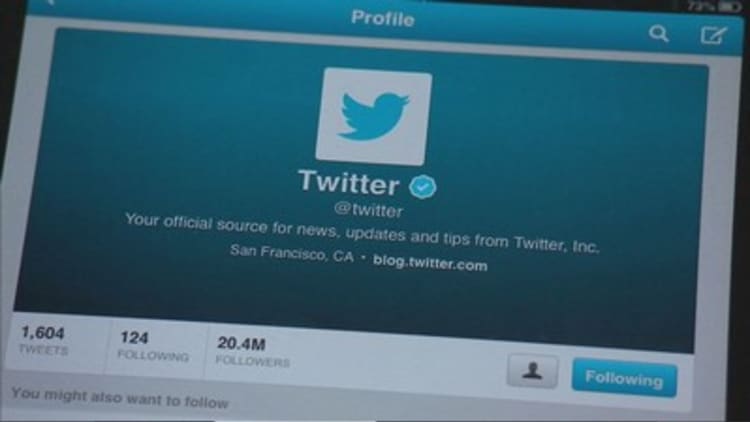
Longer tweets are coming soon to your Twitter timeline.
Twitter is building a new feature that will allow users to tweet things longer than the traditional 140-character limit, and the company is targeting a launch date toward the end of Q1, according to multiple sources familiar with the company's plans. Twitter is currently considering a 10,000 character limit, according to these sources. That's the same character limit the company uses for its Direct Messages product, so it isn't a complete surprise.
There is no official launch date set in stone, these sources say. It's also possible the character limit could fluctuate before it rolls out the final product, which people inside Twitter refer to as "Beyond 140." Re/code first reported that Twitter was building a product like this back in September. A Twitter spokesperson declined to comment.
Twitter is currently testing a version of the product in which tweets appear the same way they do now, displaying just 140 characters, with some kind of call-to-action that there is more content you can't see. Clicking on the tweets would then expand them to reveal more content. The point of this is to keep the same look and feel for your Timeline, although this design is not necessarily final, sources say.
More from Re/code:
Meet Sidewalk Labs, Google's company that's trying to fix cities and Internet all at once
Amazon added 500,000 items to Prime in six months by changing one key policy
Meet the time-traveling scientist behind Editas
The design aspect is key. Making Tweets bigger by adding more content or bigger pictures has diminished user engagement in the past, according to one source. That makes sense. If tweets take a long time to consume or take up more space on your screen, it's likely that you'll view (and engagement with) fewer of them. So Twitter is trying to add more content without disrupting the way you currently scroll through your Timeline.
It's hard to tell if changing the character limit will make much of a difference for Twitter. CEO Jack Dorsey has been looking for ways to jumpstart user growth for some time, and the company has thrown a number of product updates at users (including new event summaries called Moments) to make this happen. None of it seems to be working, and giving users more real estate to share their thoughts may not be the answer.
Still, it's an important update in what it represents: a willingness to change one of Twitter's most established product features. The 140-character limit has been around as long as Twitter has; it's part of the product's personality. Expanding the limit is a sign that Twitter and Jack Dorsey are willing to make serious change in hopes of luring new users. Twitter is also tinkering with the idea of changing its reverse chronological timeline — another core Twitter feature.
With regards to expanded tweets, Twitter is also working out a plan for how to deal with potential spamming issues that might arise with an expanded character count, according to sources. It's unknown, for example, if Twitter will restrict how many users can be mentioned in a single tweet, but the company is apparently thinking through those scenarios. Twitter plans to talk with some of its analytics and measurement partners to prepare them to handle longer tweets beginning later this month, sources say.
CNBC's parent NBCUniversal is an investor in Re/code's parent Revere Digital, and the companies have a content-sharing arrangement.




